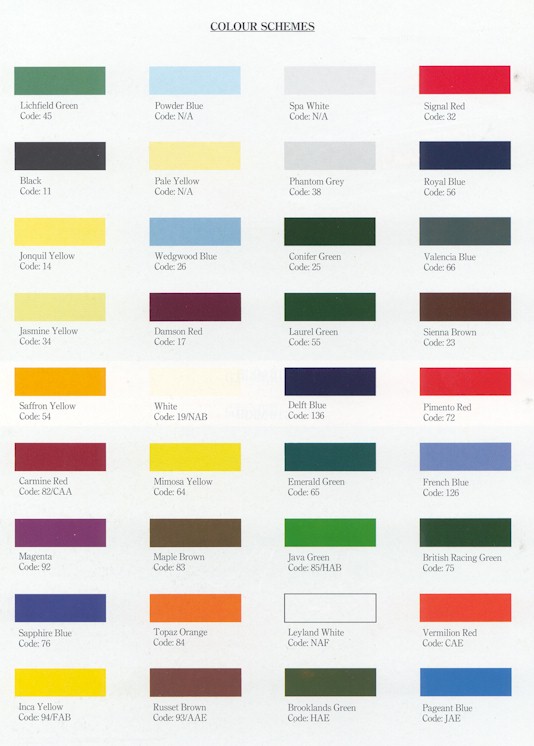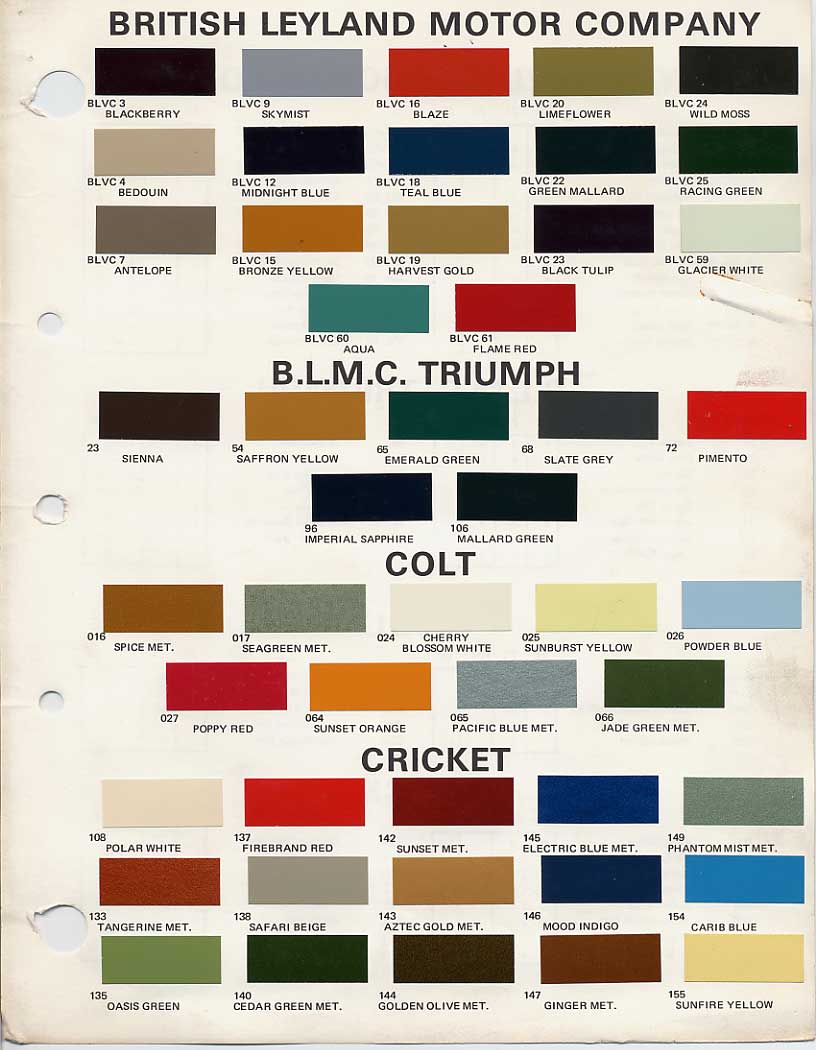In the meantime, I discovered that the heads were being scored by the camshafts. My vendor will also line hone the heads for me. Once this is done I can begin the process of removing the oil valley plugs and have the heads cleaned of the suspected glass beading.
I had an opportunity to see one of two heads that has been pre assembled and the joy of the project returned. In the mean time I've painted several parts.
Major activities to be done.
1. Painting of block may be directly related to what color I will paint the car. I am considering Sienna Brown to match my eventual paint choice. (Currently, the original #23 Sienna brown color is ahead in the polls, edging out Deflt Blue and British Racing Green.)
Earlier block colors included Orange to match the exhaust (it's so hot better get the gloves!, Black, Sienna Brown, White, Orange) I've seen Gothe landscapes at school and I am even considering a image of some sort.




Early contender

Sienna Brown

Delfi Blue?

British Racing Green?

Original Triumph Color Images


http://www.classiccarhub.co.uk/tech/triumph-paint-colours.html

Earlier block colors included Orange to match the exhaust (it's so hot better get the gloves!, Black, Sienna Brown, White, Orange) I've seen Gothe landscapes at school and I am even considering a image of some sort.
Early contender
Sienna Brown
This Spitfire Color Chart is the best I've seen to date! Since the Spitfire and the Stag were both produced by Triumph and the color codes are identical, I'm comfortable using this as a reference point.
| Colour | Colour Code | Spitfire Mk1 | Spitfire Mk2 | Spitfire Mk3 | Spitfire Mk4 | Spitfire 1500 |
|---|---|---|---|---|---|---|
| White | 19 | ’63-’64 | All Yrs | All Yrs | All Yrs | ’74-’77 |
| Leyland White | NAF | - | - | - | - | ’77-’80 |
| Spa White | No code | ’62-’63 | - | - | - | - |
| Sienna Brown | 23 | - | - | ’69-’70 | ’70-’74 | - |
| Russet Brown | 93/AAE | - | - | - | - | ’77-’80 |
| Maple Brown | 83 | - | - | - | - | ’74-’77 |
| Vermillion Red | CAE | - | - | - | - | ’77-’80 |
Delfi Blue?
British Racing Green?
| Emerald Green | 65 | - | - | - | ’72-’74 | - |
| Laurel Green | 25 | - | - | ’68-’70 | ’70-’71 | - |
| Conifer Green | 25 | ’63-’64 | All Yrs | ’67-’68 | - | - |
| Lichfield Green | 45 | ’62-’63 | - | - | - | - |
| Java Green | 85/HAB | - | - | - | - | ’74-’77 |
| British Racing Green | 75 | - | - | - | - | ’74-’77 |
| Brooklands Green | HAE | - | - | - | - | ’77-’80 |
| French Blue | 126 | - | - | - | ’72-’74 | ’74-’77 |
| Powder Blue | No code | ’62-’63 | - | - | - | - |
| Royal Blue | 56 | ’64 | All Yrs | All Yrs | - | - |
| Sapphire Blue | 76 | - | - | - | ’70-’74 | - |
| Delft Blue | 136 | - | - | - | - | ’74-’77 |
| Pageant Blue | JAE | - | - | - | - | ’77-’80 |
| Tahiti Blue | 146/JAE | - | - | - | - | ’77 |
| Valencia Blue | 66 | - | - | ’68-’70 | ’70-’71 | - |
| Wedgwood Blue | 26 | ’63-’64 | All Yrs | All Yrs | ’70-’71 | - |
| Mallard Blue | 106 | - | - | - | ’72-’74 | - (See Note 1 |
Full Color Wheel located below:
Original Triumph Color Images

http://www.classiccarhub.co.uk/tech/triumph-paint-colours.html

2. Removal of oil valley plugs
3. Air flow heads for base line and decide if further porting will help produce horsepower.
4. Pre assemble the block with pistons
5. High Torque starter
6. Distributor
7. Measure Shims for value buckets.
8. Upgrade and measure head gasket. Payton seems to be highly recommended
I just might get on the dyno by April.
Fingers crossed.










No comments:
Post a Comment